20+ Years Experience
Specialist Soft Play Equipment
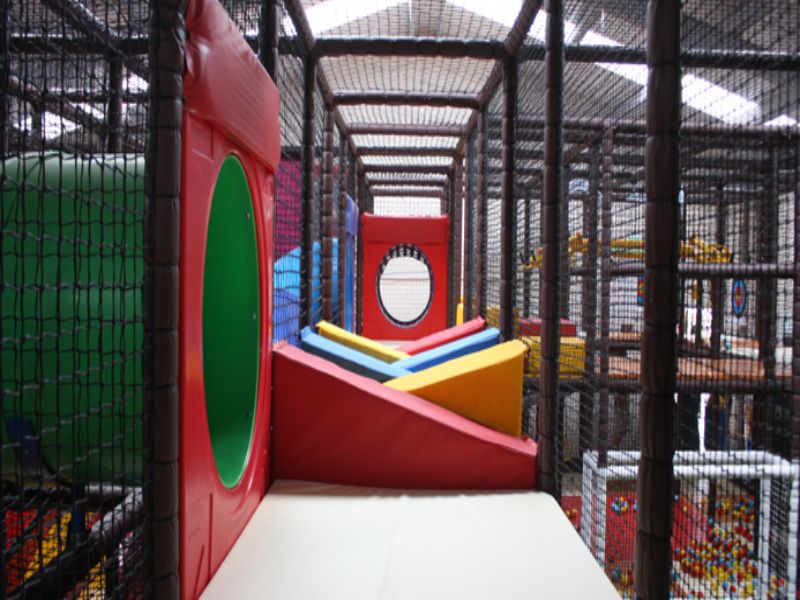
Being one of the best soft play equipment companies in the world, we can provide various installations, including trampolines and ninja course play structures.
Trampoline parks are great entertainment attractions for both kids and adults. We provide trampoline park installation for many clients, including play centres, competition venues and more.
As experts in play area ideas, we can also offer climbing wall structures, toys and games for the trampoline parks so that children can get involved in fun activities whilst they exercise.
If you require more information on the products we can install, please get in touch with our team today.
We pride ourselves on offering the best service so parents and other family members can relax knowing their child is safe.
Installing a trampoline park is a task that must be taken very seriously and given the proper attention and care it deserves.
Working with a professional trampoline park installation company is necessary when undertaking such a large task since they can provide the required expertise to ensure the process is done correctly.
The process of installing a trampoline park typically includes the following:
When measuring for a trampoline park installation, the measurements must be precise and accurate to create an effective design.
Professional trampoline park installers are experienced and trained in taking precise measurements to ensure that the design will fit perfectly within the designated area. If these measurements are not exact, the entire project may need to be redone or modified, which can greatly increase costs.
Designs for a trampoline park should include all the necessary details associated with its construction. The plan should outline exactly which materials and components will be used in the final product and how it will be assembled.
During this step, it is important to discuss potential safety concerns and any modifications that might need to be completed before starting any actual assembly or installation of the trampoline park.
Once all parties have approved the design, you can order your materials and equipment.

Delivery of your materials and equipment should be coordinated carefully with your contracted installation team.
Ensure all materials have arrived before beginning any assembly or installation steps – delays can considerably extend project timelines.
After ensuring everything has arrived safely and in one piece, the next step is assembling all parts, followed by installation in its designated location. All parts must be fit together correctly and securely before moving on to other installation processes, such as testing and opening.
Testing a trampoline park after its construction is arguably one of the most important steps in the entire process.
Professional installers must conduct multiple inspections to ensure everything has been installed correctly and up-to-code regarding safety regulations; otherwise, there is a high risk of serious injury or property damage if something goes wrong during use. After successfully passing all the tests, it can finally be opened for use!
Before starting the installation process, it is essential to know what structures are needed for a trampoline park’s successful setup and operation.
From customised netting configurations to help contain visitors onsite to specific floor types for optimal jumping heights – each kind needs special attention for maximum safety for visitors at your trampoline park!
Identifying the types of structures needed for trampoline park installation is one of the most important steps in the process.
Depending on the size and scope of your park, you may need to invest in airbags, wall components, open-jump courts and other structural systems. With pre-fabricated kits or custom designs, there are various options for your trampoline park.
Kits allow for quick installation, with all the necessary parts included and easy-to-follow instructions set up. They are often less expensive than buying individual items and can be installed more quickly than custom builds.
While they may not offer as many options as a custom design, kits can still provide a great experience for guests with options like dodgeball courts or visual art installations.
Custom designs, however, allow you to create something unique to your business and draw customers in with options like foam pits, stunt jumps or climbing walls. As such, they can be more expensive upfront but offer a greater return on investment over time.
Additionally, they offer greater customization potential so that you can make sure your facility has truly unique features that fit within your existing space requirements.
No matter the type of structure chosen for a trampoline park installation, it is important to ensure the product meets safety regulations and industry standards.
Only then can you move on to setting up the structures and providing an enjoyable venue for guests.
When installing a trampoline park, the structures that hold the equipment must be set up first. This includes columns, frames and rails, individual trampoline bed frames, and protective padding.
Ground supports such as concrete or steel may need to be installed for increased stability. Depending on the layout of the space, some of these pieces may need to be customized or modified to fit the area.
Less preparation is needed if the property has a flat surface than on an uneven surface. Safety should be considered when setting up structures in any environment.
There are many options available when setting up trampoline park structures, from sturdier materials to lightweight materials that are easier to manoeuvre but maintain high safety standards.
Those who prefer a traditional approach can use heavier materials for a permanent installation. At the same time, those who require more flexibility can opt for lighter structures that won’t damage the floor or require heavy tools to move around.
The choice in structure typically comes down to budget and preferences for stability and longevity of materials used.
To further enhance the setup process, manufacturers have created pre-fabricated trampoline parks with easy-to-follow instructions that allow customers to assemble their playgrounds.
With pre-fabricated models, anyone can quickly set up their trampoline park within a few days at an affordable cost compared to custom-built parks, which may take longer and require more expertise.
The installation process for any trampoline park requires careful planning and attention to detail. By using the proper materials and following the manufacturer’s instructions carefully, facility owners can ensure a safe and successful structured setup for their trampoline parks!
With this completed step out of the way, facility owners can move on to assembling their main trampoline area for maximum fun for all ages!

Assembling the main trampoline area of a trampoline park presents several considerations and challenges, from budgeting to safety to convenience. Installation of this area can be handled in-house or outsourced, depending on the budget and expertise of the trampoline park operators.
If opting for in-house installation of the main trampoline area, it’s important to ensure ample team knowledge and skill in handling larger projects. Operators should also consider how long such an installation might take and how it will affect production flow during the park’s occupancy period.
On the other hand, if outsourcing installation is preferred, operators must ensure they are dealing with a reputable provider with experience in constructing large trampoline areas.
An experienced provider will reduce risks and help operators achieve a high-quality final product that adheres to all local safety standards and regulations.
Once this decision is made, other considerations come into play: flooring thickness, size/shape of individual pieces or sections of trampolines, the configuration of beds (rebound, free jump), number of springs needed per bed, foam pit size and design, etc., all of which will affect the overall cost.
No matter the method chosen for installing the main trampoline area, ultimate success relies on attention to detail combined with comprehensive knowledge of current trampoline technologies and designs.
Next up: Trampoline Park Equipment Installation – Operators must select equipment that allows easy access to visitors while meeting all safety requirements.
Trampoline park equipment installation is installing and assembling the necessary equipment for a functioning trampoline park. It requires a great deal of planning, coordination, and safety protocols to produce the desired result.
The most important elements involve the proper placement of trampolines, rubber mats, foam pits, springboards, and other related parts and accessories.
One way to ensure a safe and successful installation is to hire professional technicians with years of experience in the industry.
Specialised technicians are well-versed in safety protocols and understand the specific equipment requirements for optimal efficiency. Moreover, it eliminates worry about misplacement or inadequate assembly of components.
Suppose a business chooses to go ahead without professional assistance. In that case, however, it’s highly recommended that they adequately research safety measures and follow instructions given by the manufacturer of their specific trampoline model.
Furthermore, all electrical machinery should be triple-checked for potential malfunctions.
It should also be noted that all components must adhere to strict local regulations. Three or 4-foot guardrails should surround all trampolines for optimal protection from injury.
Most importantly, all components must comply with a drop test to check for structural integrity before installation – this will further protect users from injuries caused by broken or damaged pieces of equipment.
Installing the components and accessories necessary for a successful trampoline park is an important step in setting up a trampoline park.
The process involves installing each component – walls, floors, ceilings, trampolines, mazes, etc. – and ensuring that all the systems are connected correctly.
Additionally, necessary accessories such as handrails, safety padding and protective netting around the outside of the park must be securely mounted to ensure the safe operation of the park.
When installing components and accessories, it is important to ensure they have been made to the correct specifications. This means that dimensions must be precise, and any necessary engineering calculations must be completed before installation.
Additionally, components should be built from high-quality materials to withstand long-term use. Special attention should be given to moving parts or areas near where bouncing could occur, since these may require extra protection for both users and maintenance staff.
Following local codes or regulations for safety standards is also critical when installing these components and accessories. This will help protect both customers of the trampoline park and its operators from potential legal liability or fines for non-compliance.
Building owners should thoroughly review their plans with local inspectors before beginning construction to ensure their design meets the appropriate standards for their area.
The next step in creating a successful trampoline park is ensuring safe operations.
This includes ensuring all components are installed according to safety recommendations, sufficient staff members are on hand to supervise activity areas at all times, and users comply with posted rules within the facility.
Ensuring the safe operation of a trampoline park is paramount for any business and continues to be one of the primary concerns for operators in the industry.
The park must comply with International Standards, have adequate safety protocols and procedures, and have regular safety inspections to ensure patrons are not put at risk. To start, having an experienced safety manager oversee operations is critical.
This individual should be well-versed in all current safety regulations and conduct regular staff training to ensure personnel know all protocols.
Certified inspectors should frequently inspect all trampolines and other equipment to identify potential issues before use.
Additionally, this lets the operator stay informed of when to replace equipment, thus preventing any safety incidents.
Many parks elect to limit how many patrons can access the facility at a time as an extra precaution, as overcrowding can increase the likelihood of accidents.
Other preventative measures include surface padding to minimize the impact of falls and require parental supervision for minors.
On the one hand, some argue that aggressive enforcement of these policies can limit customer satisfaction; however, proponents assert that such standards are necessary to protect users of the facility and allow them peace of mind knowing they are participating in an activity where their safety is being taken seriously.
Thus, it is up to both owners/operators and regulators alike to work together to devise rules which both support safe operations while also providing an enjoyable experience for guests.
With ensuring safe operations taken into consideration, it’s time to explore what professional support is available when installing your own trampoline park – a topic we will discuss in the next section.
The professional support required to install and open a trampoline park successfully is invaluable and multi-faceted.
An experienced contractor specialising in amusement park construction – preferably one with expertise in building trampoline parks – is strongly recommended, as they can provide realistic timelines and budgets while helping minimise potential risks.
Finding a trusted contractor with proven experience in the industry is essential to ensure that the installation runs smoothly and by safety regulations.
Additionally, it may be useful to engage the services of legal professionals knowledgeable about regulatory guidelines for amusement parks, as well as insurance specialists who can advise on suitable liability coverage.
Working with experienced professionals allows for an organized and methodically planned design process, resulting in a construction phase that meets or exceeds expectations.
Investing in experienced professionals also has other advantages, such as providing insight into possible funding sources for the project, advice on developing marketing strategies, and guidance regarding staffing decisions.
Professional help can be especially useful when designing an overall concept and layout that optimizes available space while producing aesthetically pleasing results.
On the other hand, due to the cost of engaging third-party services, some owners opt to forego professional support entirely during the installation process in favour of self-managed efforts.
However, this can represent a significant risk as missing important steps could interrupt the timeline and potentially endanger customers’ safety if operations are not properly implemented.
In summary, while there are both pros and cons to engaging third-party experts for professional support during trampoline park installation – considering the cost associated with each option – it’s clear that relying only on yourself might lead to unwanted delays or, worse yet, dangerous situations for customers frequenting your park.
Ultimately, it is up to the owner to weigh their financial resources against potential rewards and make an informed decision when deciding whether or not to seek professional help.
Several costs are associated with estimating the total installation cost when planning to install a trampoline park.
These include the initial cost of purchasing equipment and materials, labour, and other expenses such as taxes, licensing fees, and permits. Before investing, it is important to understand all the costs associated with installing a trampoline park.
The largest expense when installing a trampoline park will be for new equipment.
Trampolines, padding, basketball hoops, foam pits, safety nets and other features can range from thousands to tens of thousands of pounds, depending on the size and scope of your park.
In addition to trampolines and other features, you may need to purchase additional items such as mats, wires, springs, and PVC pipes.

After purchasing all the required equipment, you will have to hire an experienced contractor to do the installation.
The labour cost will depend on the project’s complexity and the contractor’s experience level. Most contractors charge by the hour or may provide a flat fee based on various factors such as location, access, park size, etc.
Also, remember that labour costs include subcontractors (such as electricians), clean-up services, air compressor rental fees, lift rental expenses, and other relevant services needed for completion.
Installing a trampoline park can range from hundreds to thousands of pounds depending on how extensively or simple it is designed.
The most expensive investment is equipment costs, followed by labour costs for installations and then access, size and licenses which must also be taken into consideration.
Making sure that all those costs are accounted for before starting installation will ensure that you have an accurate budget, which will help prevent any cost overruns during project completion.
When it comes to trampoline park installation, the materials required vary depending on the type of park being installed.
Generally speaking, you will need a high-gauge steel frame, trampoline enclosures and safety mats, padding, protective netting, and hardware for assembly.
The steel frame should be strong enough to support the weight of several people jumping simultaneously, so it’s important to make sure you opt for a sturdy material.
The trampoline enclosure should also be durable; ideally, either heavy-duty vinyl or canvas for maximum durability. Safety mats are generally placed around the perimeter of the trampolines to provide shock absorption; these mats should be made from high-grade foam with a cover resistant to water, fire and UV rays.
Padding is used to fill gaps or corners where the trampoline enclosure fails to reach the floor. Protective netting should also be included to keep participants safe while jumping.
Finally, all necessary hardware must be provided for the park to assemble properly, such as screws and bolts.

Taking proper safety precautions when installing a trampoline park is essential. Preventive measures include assessing the space, planning for potential hazards, choosing appropriate equipment, and training staff in safe practices.
When assessing the space, ensure it is large enough to accommodate multiple users without coming too close to other structures or equipment. It is also important to determine whether the ground level is even and able to support the weight of several people bouncing on a trampoline simultaneously.
Planning for potential hazards is another key measure when setting up a trampoline park.
Look for potentially exposed springs, sharp edges and objects near the trampoline surface, and contact points between the trampoline and other characters like basketball hoops.
Ensure the area is thoroughly fenced off to prevent people from entering while the trampolines are in use or falling off.
Choosing appropriate equipment for your trampoline park is also essential for safety’s sake. Investing in quality equipment such as netting and padding will help protect people from potential accidents or injuries due to falls or collisions.
Finally, ensuring your staff are qualified and trained to handle any issues that may arise during the park operation is essential for providing a safe environment for visitors.
Educate your staff on procedures for dealing with minor incidents such as falls or bruises, ensuring a plan for addressing medical issues should they occur, and regulations on limiting user numbers depending on age and size restrictions.
Installing a trampoline park is a complex process that requires expert help from professional installers and designers.
The steps include measuring, designing, ordering materials and equipment, delivery, assembly, installation, testing and opening.
Taking precise measurements to create a detailed design for the trampoline park is essential, as well as a thorough inspection of all parts before and after installation to ensure safety measures have been met.
Knowing what structures are needed before installation is necessary for maximum safety at your trampoline park.
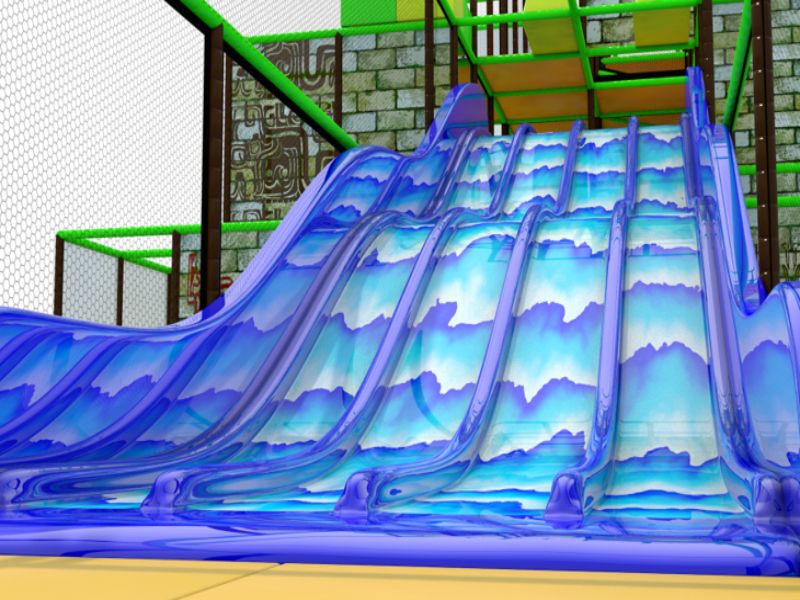
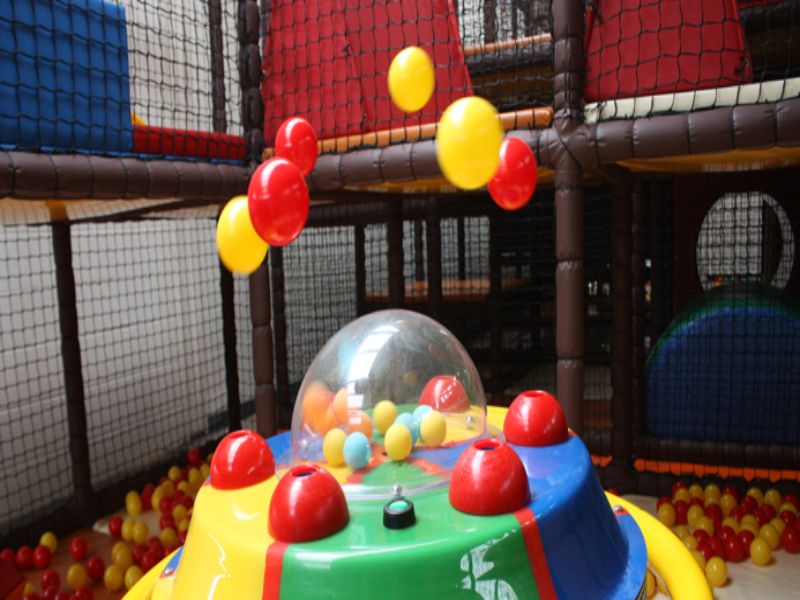
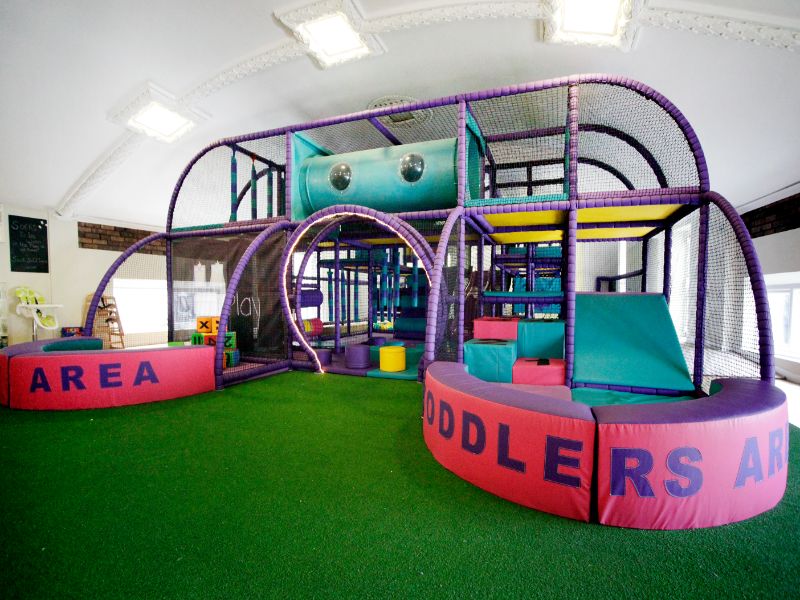

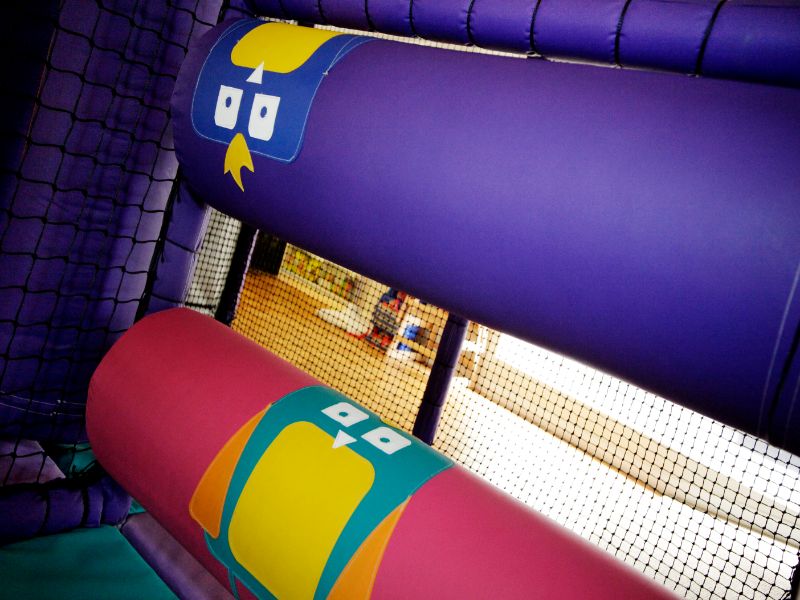
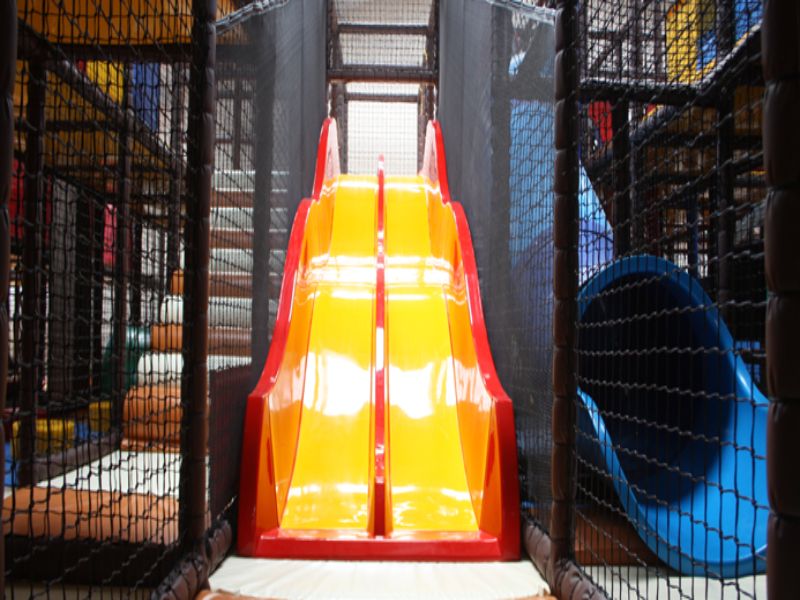

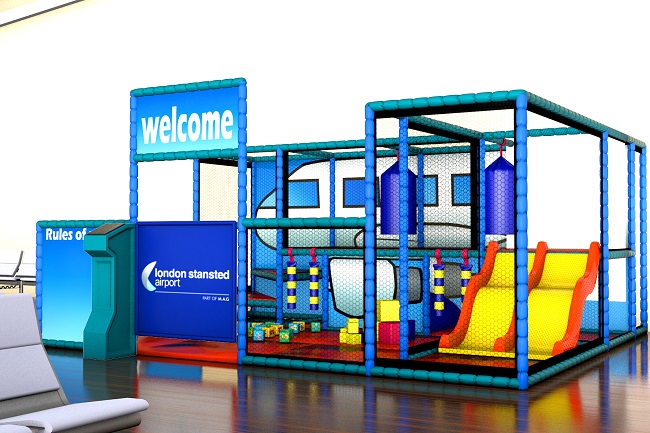


Our team provide a number of soft play services ranging from design to manufacturing and installation. Have a look at the list below for more information:










We Aim To Reply To All Enquiries With-in 24-Hours